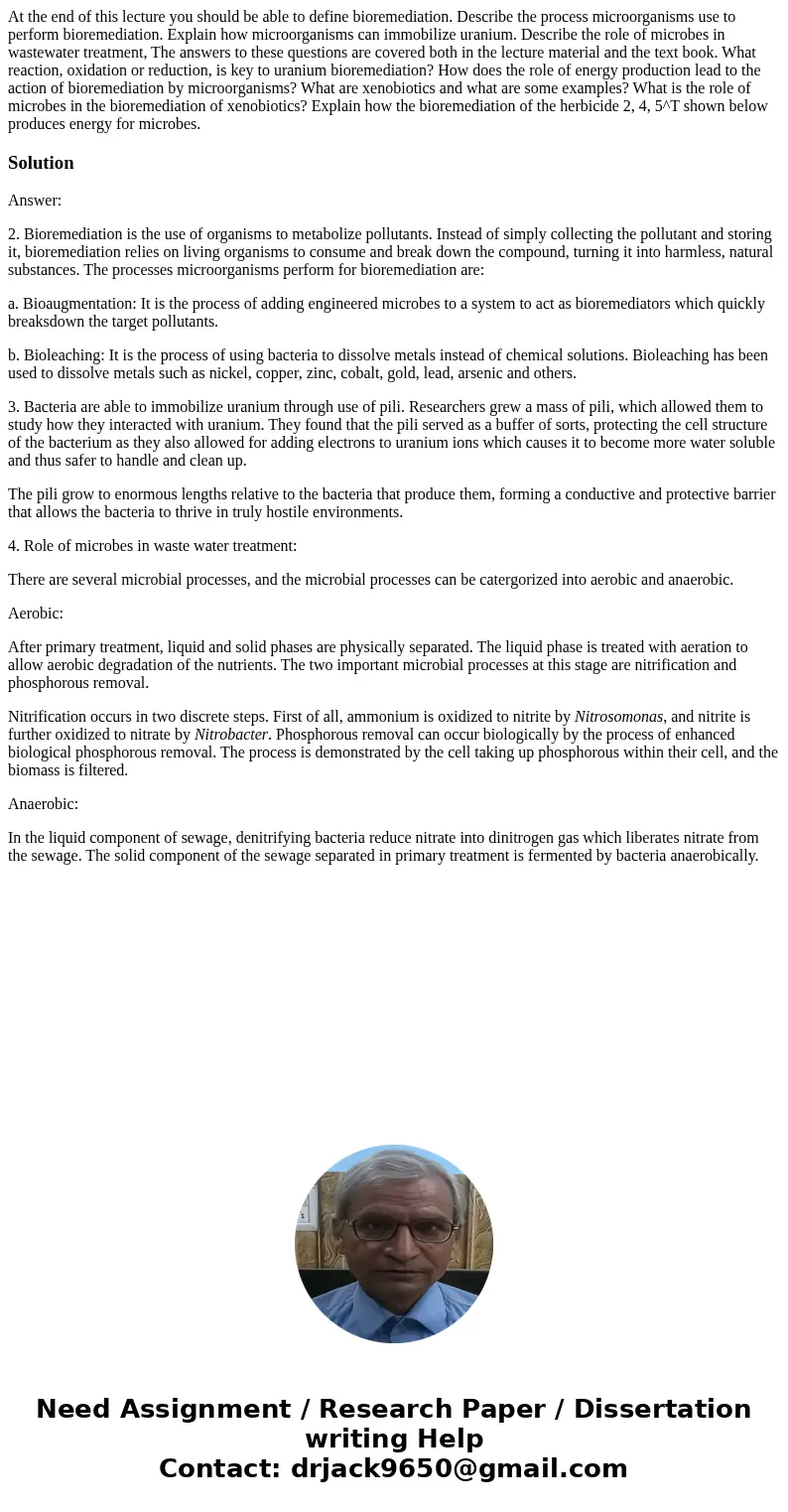At the end of this lecture you should be able to define bior
Solution
Answer:
2. Bioremediation is the use of organisms to metabolize pollutants. Instead of simply collecting the pollutant and storing it, bioremediation relies on living organisms to consume and break down the compound, turning it into harmless, natural substances. The processes microorganisms perform for bioremediation are:
a. Bioaugmentation: It is the process of adding engineered microbes to a system to act as bioremediators which quickly breaksdown the target pollutants.
b. Bioleaching: It is the process of using bacteria to dissolve metals instead of chemical solutions. Bioleaching has been used to dissolve metals such as nickel, copper, zinc, cobalt, gold, lead, arsenic and others.
3. Bacteria are able to immobilize uranium through use of pili. Researchers grew a mass of pili, which allowed them to study how they interacted with uranium. They found that the pili served as a buffer of sorts, protecting the cell structure of the bacterium as they also allowed for adding electrons to uranium ions which causes it to become more water soluble and thus safer to handle and clean up.
The pili grow to enormous lengths relative to the bacteria that produce them, forming a conductive and protective barrier that allows the bacteria to thrive in truly hostile environments.
4. Role of microbes in waste water treatment:
There are several microbial processes, and the microbial processes can be catergorized into aerobic and anaerobic.
Aerobic:
After primary treatment, liquid and solid phases are physically separated. The liquid phase is treated with aeration to allow aerobic degradation of the nutrients. The two important microbial processes at this stage are nitrification and phosphorous removal.
Nitrification occurs in two discrete steps. First of all, ammonium is oxidized to nitrite by Nitrosomonas, and nitrite is further oxidized to nitrate by Nitrobacter. Phosphorous removal can occur biologically by the process of enhanced biological phosphorous removal. The process is demonstrated by the cell taking up phosphorous within their cell, and the biomass is filtered.
Anaerobic:
In the liquid component of sewage, denitrifying bacteria reduce nitrate into dinitrogen gas which liberates nitrate from the sewage. The solid component of the sewage separated in primary treatment is fermented by bacteria anaerobically.

 Homework Sourse
Homework Sourse